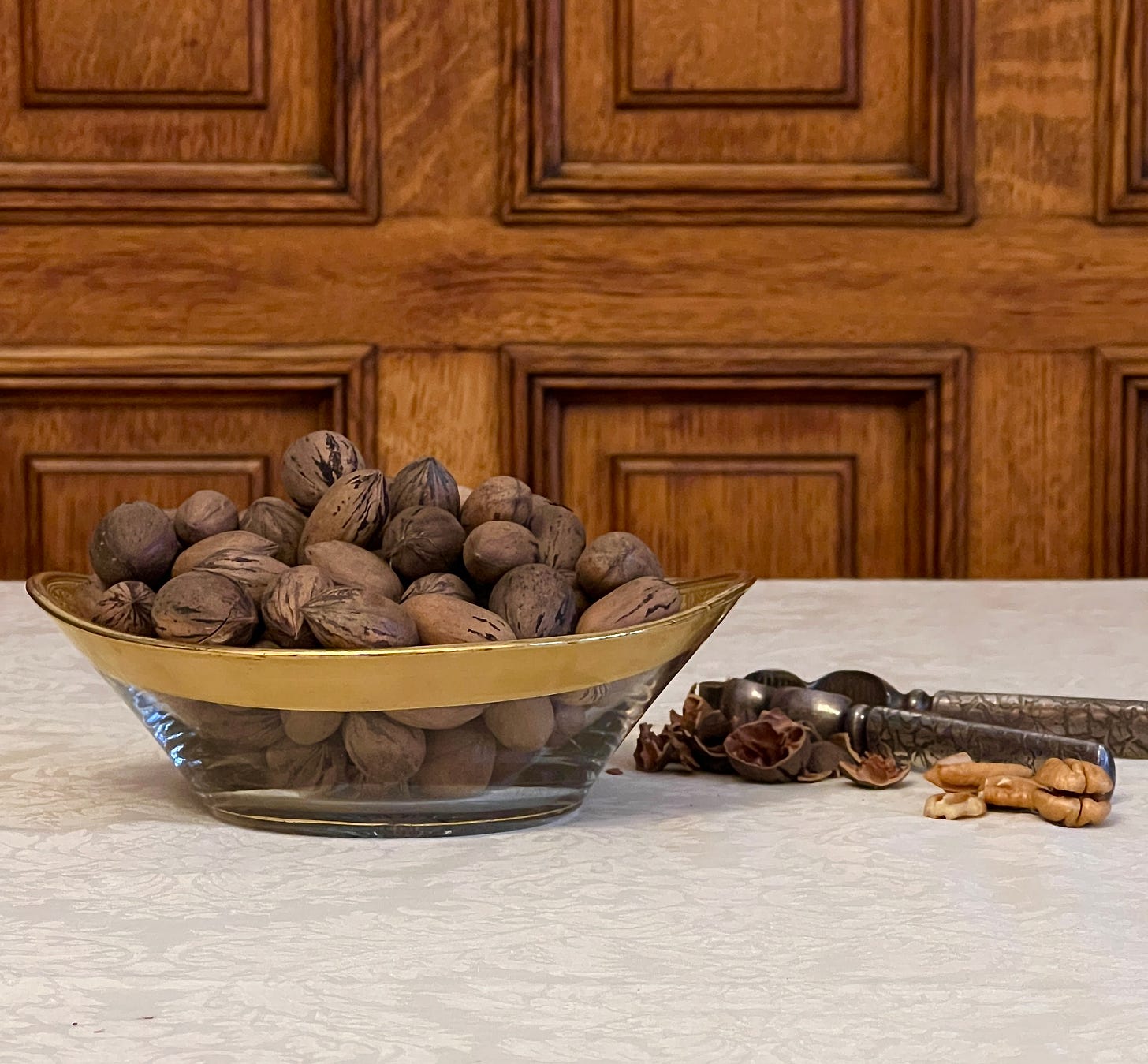IN THE PLACES WHERE PECANS grow wild, most people think native pecans taste much better, although the farmers there raise mainly the big improved papershell varieties that are a specialty of Georgia. Native pecans are smaller and mostly have thicker shells. When I first tasted them side by side with papershells raised on the same Kansas farm, the natives were much, much better, sweeter and more buttery. (“Buttery” may not be the perfect adjective, but it comes close.) The pecan is a North American native — pakan is an Algonquian word for a hard-shelled nut. The natural range follows the Mississippi River and its tributaries, and it was probably extended by Native Americans; later farmers certainly spread the trees. Pecans grow wild in large parts of Texas, Oklahoma, Louisiana, and Arkansas and smaller parts of other states, running up into Missouri, southern Illinois, and southern Indiana. Farmers sometimes convert natural groves of pecans into orchards by cutting out other trees. Often they graft the wild trees over to more productive papershell varieties. Many farmers raise both kinds. Most of the natives are sold in bulk for use in baked goods and other products, but some farms sell them directly, and more profitably, along with papershells.
© 2025 The Art of Eating
Substack is the home for great culture



